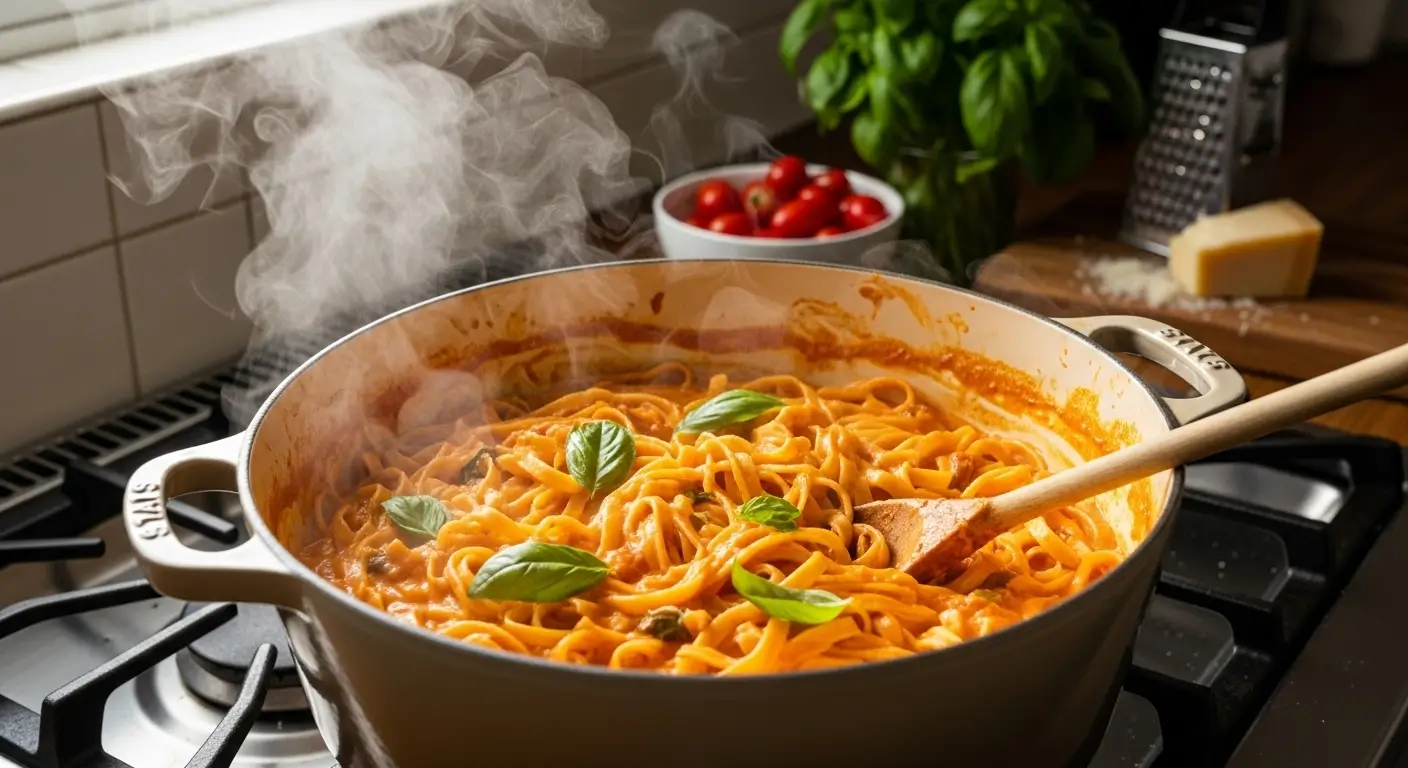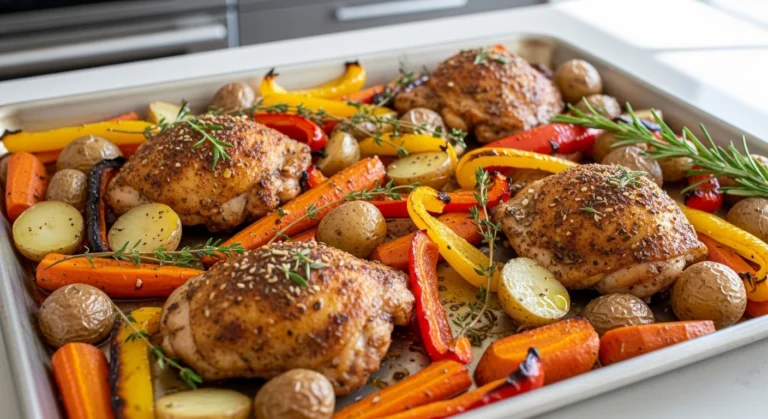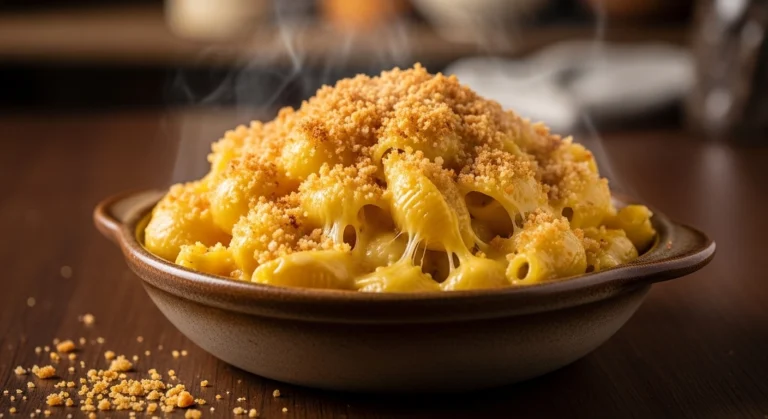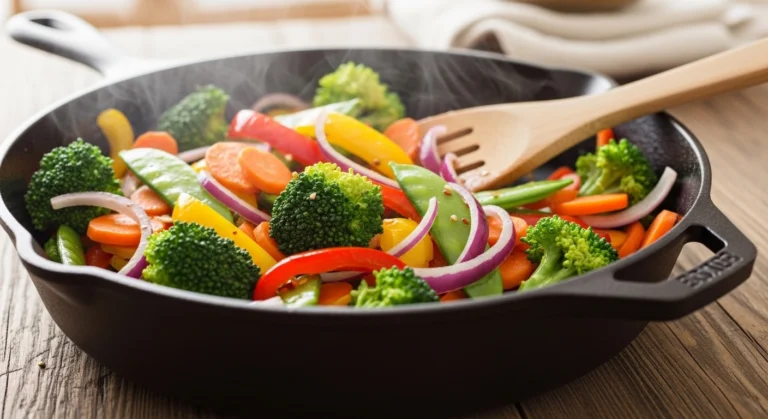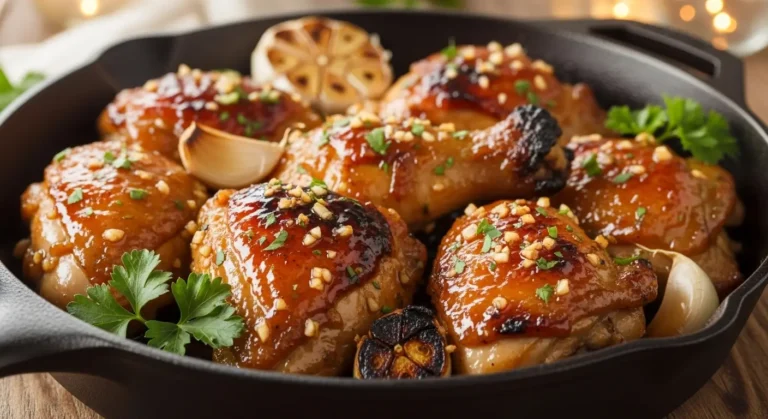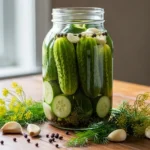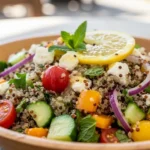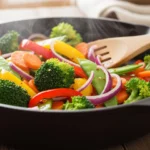Introduction
One-pot pasta dishes transform ordinary weeknight dinners into effortless culinary experiences with minimal cleanup and maximum flavor. Whether you’re rushing home from work or feeding a hungry family, these recipes deliver restaurant-quality results using just one pot, skillet, or Dutch oven. Throughout this guide, you’ll discover why one-pot cooking revolutionizes pasta preparation, master essential ingredient ratios, explore classic and international flavor combinations, learn time-saving techniques, and develop strategies for meal prep success. By the end, you’ll have a complete arsenal of one-pot pasta dishes that make dinner both simple and satisfying.
Benefits of One-pot pasta dishes
Time-saving advantages for busy households
The beauty of one-pot cooking lies in its streamlined approach to meal preparation. Instead of waiting for water to boil in a separate pot, pasta cooks directly in flavorful liquids alongside other ingredients. This method cuts cooking time nearly in half while developing deeper, more complex flavors. Furthermore, ingredients cook simultaneously, eliminating the need for multiple cooking stages and constant monitoring. Consequently, busy families can enjoy homemade meals without the usual time investment or kitchen chaos.
Minimal cleanup and kitchen efficiency
Perhaps the greatest advantage of one-pot pasta dishes is the dramatic reduction in dirty dishes. Traditional pasta cooking requires at least two pots, a colander, serving bowls, and various utensils. However, one-pot methods use just one vessel from start to finish. Moreover, the pasta absorbs cooking liquids completely, eliminating the need for draining or transferring. As a result, cleanup becomes a breeze—just one pot to wash and you’re done.
Essential Ingredients for One-pot pasta dishes
Choosing the right pasta shapes
Success in one-pot cooking depends heavily on pasta selection. Short, sturdy shapes like penne, rigatoni, rotini, and shells work exceptionally well because they cook evenly and hold sauces beautifully. Additionally, these shapes won’t clump together as easily as long noodles. Meanwhile, delicate pasta like angel hair cooks too quickly and may become mushy. Therefore, stick with medium to thick shapes that can withstand longer cooking times while maintaining their texture.
Liquid ratios and starch principles
The magic of one-pot pasta lies in precise liquid measurements. Generally, use about 4-5 cups of liquid per 12 ounces of pasta. This ratio allows the pasta to absorb most of the liquid while releasing enough starch to create a naturally creamy sauce. Furthermore, combining different liquids—such as broth, milk, and tomatoes—adds layers of flavor that penetrate every strand. Ultimately, understanding these ratios ensures perfectly cooked pasta with built-in sauce every time.
Classic One-pot pasta dishes Recipes
Tomato basil pasta with fresh ingredients
This timeless combination showcases the simplicity and elegance of one-pot cooking. Start by sautéing garlic and onions in olive oil, then add cherry tomatoes, pasta, and vegetable broth. Season with Italian herbs and simmer until pasta is tender. Finally, stir in fresh basil, spinach, and Parmesan cheese for a bright, satisfying meal that’s ready in under 25 minutes.
Creamy chicken alfredo variations
Transform ordinary chicken alfredo into a one-pot wonder by cooking everything together. Begin by browning chicken pieces, then add pasta, chicken broth, and cream. Season generously and simmer until pasta is al dente. Finish with Parmesan cheese and fresh herbs for an indulgent dinner that rivals any restaurant version.
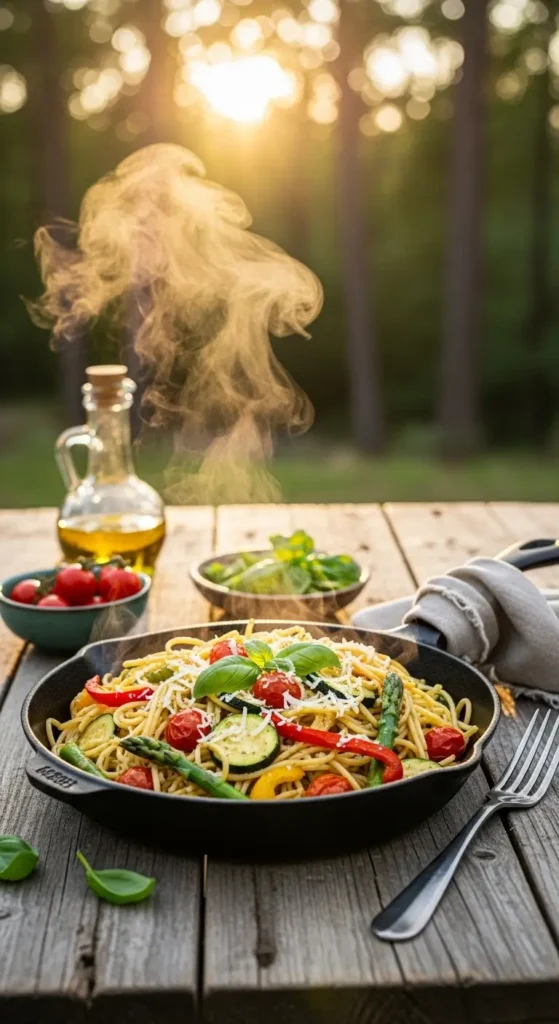
Vegetarian One-pot pasta dishes Ideas
Veggie-packed primavera combinations
Primavera dishes celebrate seasonal vegetables in a single, colorful pot. Combine your favorite vegetables—such as bell peppers, zucchini, mushrooms, and broccoli—with pasta and vegetable broth. Add garlic, Italian seasoning, and a splash of cream for richness. This versatile recipe adapts easily to whatever vegetables you have on hand, making it perfect for using up refrigerator odds and ends.
Mediterranean-inspired olive and herb dishes
Transport your taste buds to the Mediterranean with olives, sun-dried tomatoes, artichokes, and feta cheese. Cook pasta with vegetable broth, then stir in Mediterranean ingredients along with fresh herbs like oregano and basil. Finish with a drizzle of good olive oil and lemon juice for a bright, flavorful meal that feels sophisticated yet simple.
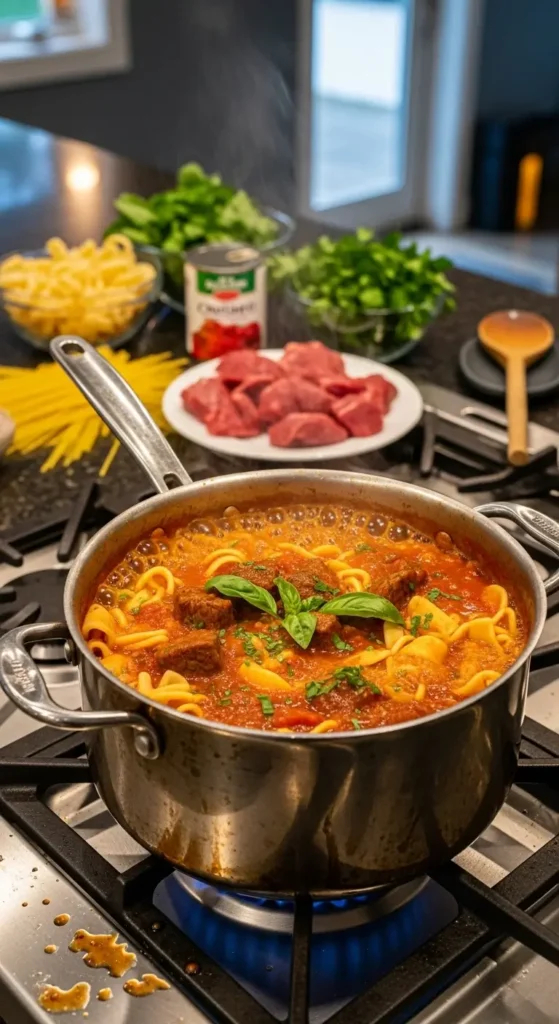
Protein-rich One-pot pasta dishes
Beef and sausage combinations
Hearty meat lovers will appreciate the robust flavors of beef and sausage pasta dishes. Brown ground beef or Italian sausage first, then add pasta, marinara sauce, and beef broth. Season with Italian herbs and simmer until pasta is tender. These protein-packed meals satisfy even the heartiest appetites while providing sustained energy.
Seafood and shrimp pasta skillets
Seafood adds elegance and lightness to one-pot meals. Sauté shrimp with garlic and herbs, then add pasta, white broth, and a splash of cream or white wine (if desired). Cook until pasta is tender and shrimp are pink. Finish with lemon juice, parsley, and Parmesan for a restaurant-quality dish that’s ready in minutes.
International One-pot pasta dishes Flavors
Asian-inspired noodle bowls
Fusion cooking creates exciting new flavor profiles in one-pot dishes. Try Asian-inspired combinations using soy sauce, ginger, garlic, and sesame oil. Add vegetables like snap peas, mushrooms, and carrots along with your protein of choice. These dishes bridge the gap between pasta and stir-fry, creating unique meals that satisfy diverse palates.
Mexican-style spicy pasta creations
Spice up dinner with Mexican flavors like cumin, chili powder, and jalapeños. Combine pasta with salsa, black beans, corn, and cheese for a Tex-Mex twist. Top with avocado, cilantro, and lime juice for authentic flavors that will have everyone asking for seconds.
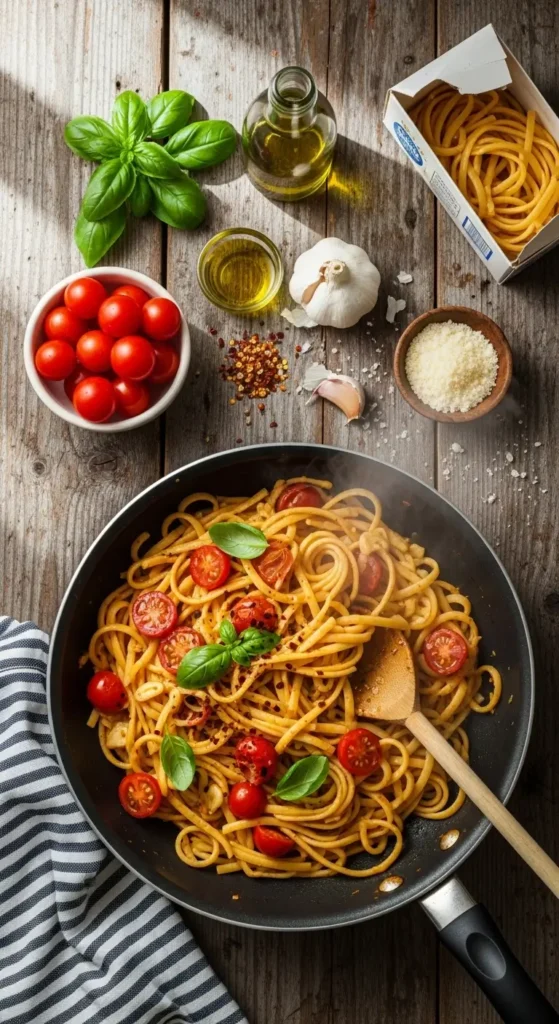
Quick 20-minute One-pot pasta dishes
Speed-cooking techniques and shortcuts
When time is extremely limited, focus on the fastest-cooking ingredients and techniques. Use thin pasta shapes, pre-cooked proteins, and jarred sauces to cut preparation time. Additionally, increase heat slightly and stir frequently to ensure even cooking. These shortcuts deliver satisfying meals without compromising on flavor or nutrition.
Minimal-ingredient combinations
Sometimes the best meals use the fewest ingredients. Try simple combinations like pasta, canned tomatoes, garlic, and basil. Or combine pasta with broth, frozen vegetables, and cheese. These minimal-ingredient dishes prove that delicious food doesn’t require complicated recipes or extensive shopping lists.
Make-ahead and Freezer One-pot pasta dishes
Meal prep strategies for busy weeks
One-pot pasta dishes adapt beautifully to meal prep routines. Cook large batches on weekends, then portion into containers for easy reheating throughout the week. Most dishes keep well in the refrigerator for 4-5 days and can be reheated in the microwave or on the stovetop with a splash of additional liquid.
Storage and reheating best practices
To maintain quality during storage, slightly undercook pasta during initial preparation—it will finish cooking during reheating. Store in airtight containers and add a tablespoon of broth or water before reheating to prevent drying out. Frozen portions keep for up to three months and can be reheated directly from frozen.
Expert Tips for Perfect One-pot pasta dishes
Liquid ratios and cooking techniques
Success depends on maintaining proper liquid levels throughout cooking. Start with the recommended amount, but keep extra broth on hand in case additional liquid is needed. Stir regularly to prevent sticking and ensure even cooking. If pasta seems dry, add liquid gradually until you achieve the desired consistency.
Troubleshooting common mistakes
Common problems include mushy pasta, insufficient sauce, or burnt bottoms. Prevent these issues by monitoring heat levels, stirring frequently, and adjusting liquid as needed. If pasta is cooking too quickly, reduce heat and add more liquid. If the bottom starts to stick, lower the temperature immediately and add a splash of broth.
Frequently Asked Questions
PPA1: Can I use any type of pasta for one-pot dishes?
Short, sturdy shapes like penne, rigatoni, and rotini work best. Avoid delicate pasta like angel hair as it cooks too quickly and may become mushy.
PAA2: How much liquid should I use per pound of pasta?
Use approximately 4-5 cups of liquid per 12 ounces of pasta. Adjust based on desired consistency and pasta shape.
PAA3: Can I make one-pot pasta dishes ahead of time?
Yes! They’re perfect for meal prep. Store in the refrigerator for 4-5 days or freeze for up to 3 months.
PAA4: What if my pasta is too dry or too soupy?
Add more broth if too dry, or simmer uncovered if too soupy. The pasta will absorb excess liquid as it sits.
PAA5: Can I substitute different vegetables in these recipes?
Absolutely! One-pot dishes are very versatile. Use whatever vegetables you have on hand, adjusting cooking times as needed.
PAA6: Are one-pot pasta dishes healthy?
They can be very healthy, especially when loaded with vegetables and lean proteins. Control sodium by using low-sodium broths and limit heavy cream for lighter versions.
Conclusion
Mastering one-pot pasta dishes revolutionizes weeknight dinner routines by combining convenience, flavor, and efficiency in one simple technique. From classic tomato basil combinations to international fusion creations, these versatile recipes adapt to any taste preference or dietary need. Use proper liquid ratios, choose appropriate pasta shapes, and don’t be afraid to experiment with different flavor combinations. With minimal cleanup and maximum satisfaction, these dishes prove that great cooking doesn’t require complicated techniques or endless dirty dishes.
Print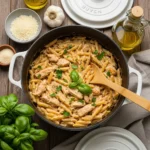
How to Make One-Pot Pasta Dishes Like a Pro
- Total Time: 30 minutes
- Yield: 4 servings 1x
Description
One-pot pasta dishes transform ordinary weeknight dinners into effortless culinary experiences with minimal cleanup and maximum flavor.
Ingredients
- 12 oz pasta (penne, rigatoni, or rotini recommended)
- 4–5 cups liquid (broth, milk, or tomato base)
- 1 onion, chopped
- 3 cloves garlic, minced
- 2 tbsp olive oil
- 1 cup cherry tomatoes
- 1–2 cups mixed vegetables (zucchini, peppers, broccoli, or mushrooms)
- 1 lb chicken, beef, sausage, or shrimp (optional)
- 1 cup Parmesan or feta cheese
- Fresh herbs (basil, oregano, parsley)
- Salt and pepper to taste
Instructions
- Heat olive oil in a large pot or Dutch oven.
- Sauté onion and garlic until fragrant.
- Add chosen protein (if using) and cook until browned.
- Add pasta, vegetables, and 4–5 cups of liquid.
- Season with salt, pepper, and herbs.
- Bring to a boil, then reduce heat and simmer uncovered, stirring occasionally.
- Cook until pasta is al dente and liquid is absorbed (12–15 minutes).
- Stir in cheese and additional fresh herbs.
- Adjust consistency with extra broth if needed.
- Serve hot and garnish with fresh herbs or lemon juice.
Notes
Stick with short pasta shapes for best texture. Always adjust liquid levels during cooking to prevent sticking or drying out.
- Prep Time: 10 minutes
- Cook Time: 20 minutes
- Category: Main Course
- Method: One-Pot
- Cuisine: International
Nutrition
- Serving Size: 1 serving
- Calories: 420
- Sugar: 6g
- Sodium: 580mg
- Fat: 15g
- Saturated Fat: 6g
- Unsaturated Fat: 8g
- Trans Fat: 0g
- Carbohydrates: 55g
- Fiber: 5g
- Protein: 18g
- Cholesterol: 40mg
Keywords: one-pot pasta, quick dinner, easy pasta recipe, weeknight meal

